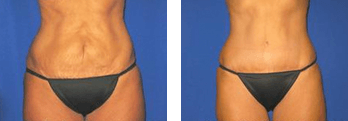Home | Surgical | Face | Otoplasty
On This Page

What is Otoplasty?
Otoplasty, otherwise known as “ear pinning,” is a commonly performed procedure that improves the shape, positioning, and size of the ears.
This procedure will make your ears more proportional to the head and face. In most cases, Otoplasty is performed on patients with a defect in the ear structure that was present from birth. As the child grows and develops, the condition becomes more apparent. It is also effective for the treatment of misshapen ears caused by an accident or injury.

What Can Otoplasty Treat?
Using the Otoplasty procedure, Dr. Rivela can reposition protruding ears, reduce ear size, and reshape bends in cartilage creating a more aesthetically pleasing appearance. Dr. Rivela, one of the most sought-after plastic surgeons in the Greater Houston area, has successfully performed many Otoplasty surgeries.
Protruding ears can be psychologically damaging for children and adults alike. In elementary school, as children begin noticing differences between themselves and others, it often leads to teasing and name-calling by peers. During this critical time in the development of self-esteem, long-lasting negative results can occur. Adults dealing with this problem often find creative ways of concealing it—for example, with hairstyles—as they go about their daily routines. Correction with Otoplasty can benefit not only a patient’s appearance but their self-esteem as well.
Who is a Candidate for Otoplasty?
Children who are good candidates for surgery are:
- At least five years old with ear cartilage stable enough for correction
- In good physical health with no chronic or untreated ear infections
- Cooperative and follows instructions well
- Able to communicate feelings and voice no objections in discussing surgery
Teenagers and adults who are good candidates are:
- In good, overall physical health
- Non-smokers
- Individuals with a positive outlook, specific surgical goals, and realistic expectations
Your Otoplasty Consultation with Dr. Rivela
Surgical success will greatly depend upon full disclosure during the consultation and carefully following all of Dr. Rivela’s instructions. Your personal consultation is the chance to interact and set up a surgical game plan. Be prepared to ask all the questions you have. Our concern is for you and your well-being.
Be prepared to discuss:
- Why you or your child have chosen to have surgery, surgical expectations, and desired outcome
- Options available in Otoplasty
- All medical conditions, drug allergies, and medical treatments
- All medications currently being taken including prescription, non-prescription, vitamins, herbal supplements, alcohol, tobacco, and illegal drugs
- Previous surgeries
Dr. Rivela may also:
- Evaluate overall general health status and discuss any pre-existing conditions or risk factors
- Take measurements of each ear
- Take photographs for medical records
- Discuss your surgical options and recommend procedure
- Discuss likely outcomes and discuss risks or possible complications
Please contact Rivela Plastic Surgery for any questions you may have about this or any other, cosmetic enhancement you are considering. We look forward to setting up your one-on-one, personal consultation with Dr. Rivela.
MEET DR. RIVELA
With over 25 years of experience, Lucian J. Rivela M. D., F. A. C. S. is proud to offer some of the most innovative procedures available in cosmetic and plastic surgery, aesthetic treatments, and skincare. Dr. Rivela is board certified and is a member of both The American Society of Plastic Surgeons and The American Society of Aesthetic Plastic Surgery. He and his staff are dedicated to helping you be your best confident, natural, and authentic self.
LEARN MORE
Your Otoplasty Procedure
Dr. Rivela usually performs Otoplasty at a surgical center under general or local anesthesia. Depending upon the patient, it may take anywhere from 1-4 hours. The ear, covered by a thin layer of skin, is made up of cartilage that will be accessed through incisions made behind the ear. Using internal stitches, Dr. Rivela will mold and manipulate the cartilage creating an ear proportionate to the head. To close the incision, he will use external stitches for later removal.
About the Procedure
AnesthesiaGeneral
Location of operationHospital or surgery center
Length of surgery1-4 hours
Length of stayOutpatient (home same day)
Your Otoplasty Recovery Notes
Discomfort after Otoplasty: Pain level will be moderate and in most cases, Tylenol will control it. It is important not to put pressure on the ear area. Sleeping patterns may be slightly disrupted if accustomed to sleeping on your side. It is important to keep your head elevated at all times for the first week of recovery.
Swelling and Bruising: Mild swelling may persist for several weeks, and bruising will normally disappear between 7-10 days.
Bandages: After your surgery, an ear protector will be placed over the ears and worn for several days and a light head dressing similar to a headband will be used at night providing support. It is normal to have an itchy feeling under the bandages, but it is essential that they remain intact and are not removed for any reason. Removal could result in loss of correction.
Stitches: In most cases, stitches will either dissolve or be removed in about a week. If internal, non-removable stitches are used to help provide structural support, they will remain.
Make-up: Wearing glasses is not allowed for 1-2 weeks.
Work: You should feel well enough to return to work in 7-10 days. Children should be able to return to school in the same time frame.
Exercise: You should avoid bending for a week. No exercise or lifting for 4-6 weeks.
Final result: 6-9 weeks.
About the Recovery Process
DiscomfortModerate
Swelling & Bruising7-10 days
BandagesSeveral days
Stitches1 week
WorkReturn in 7-10 days
Exercise 4-6 weeks
Final Result6-9 weeks





